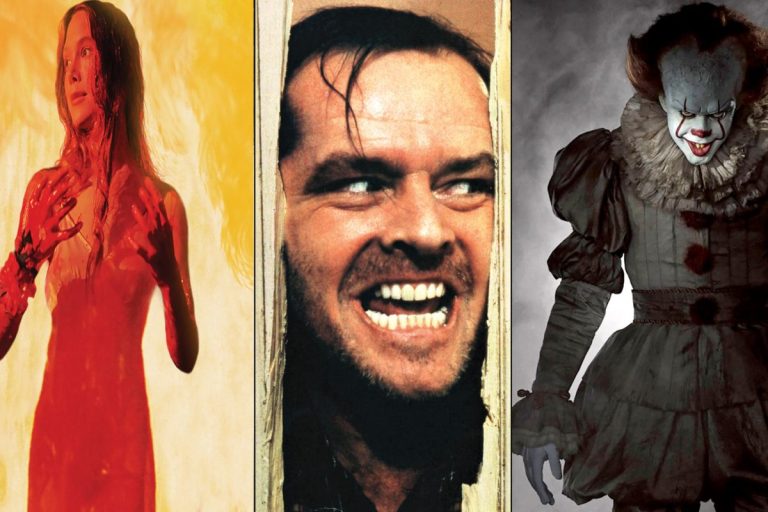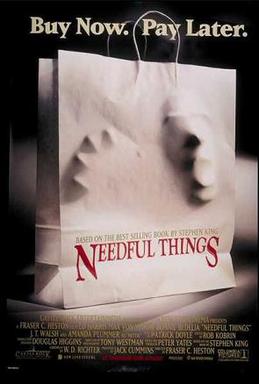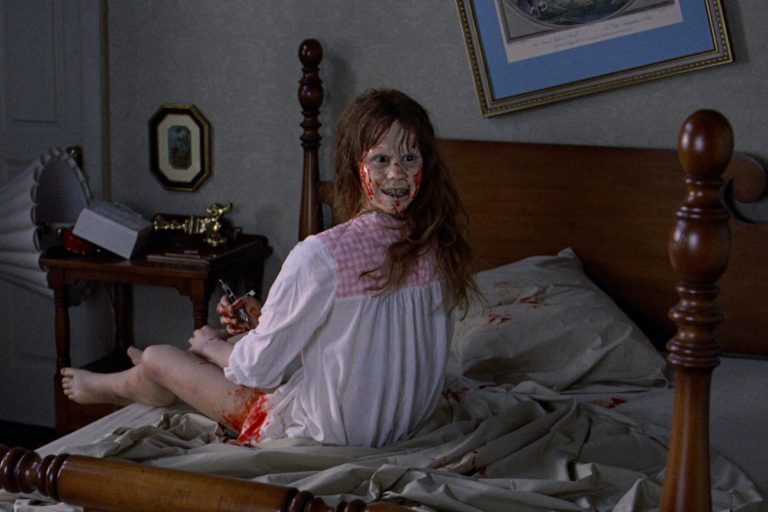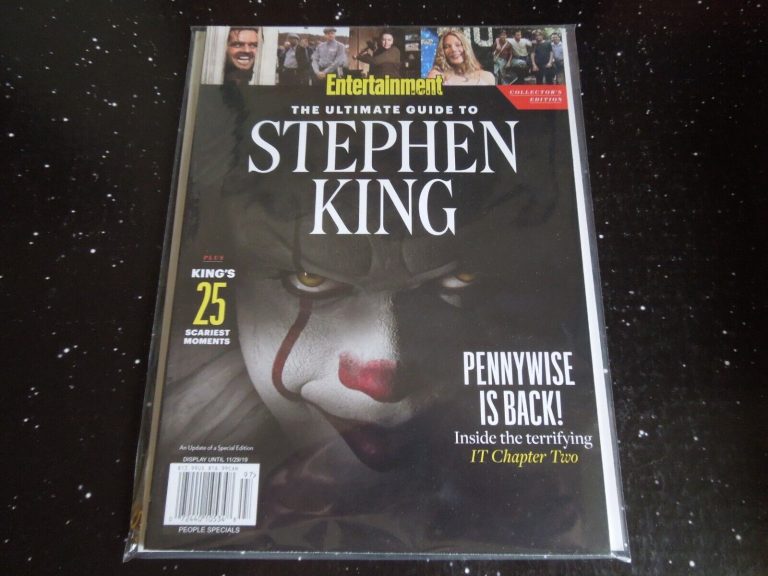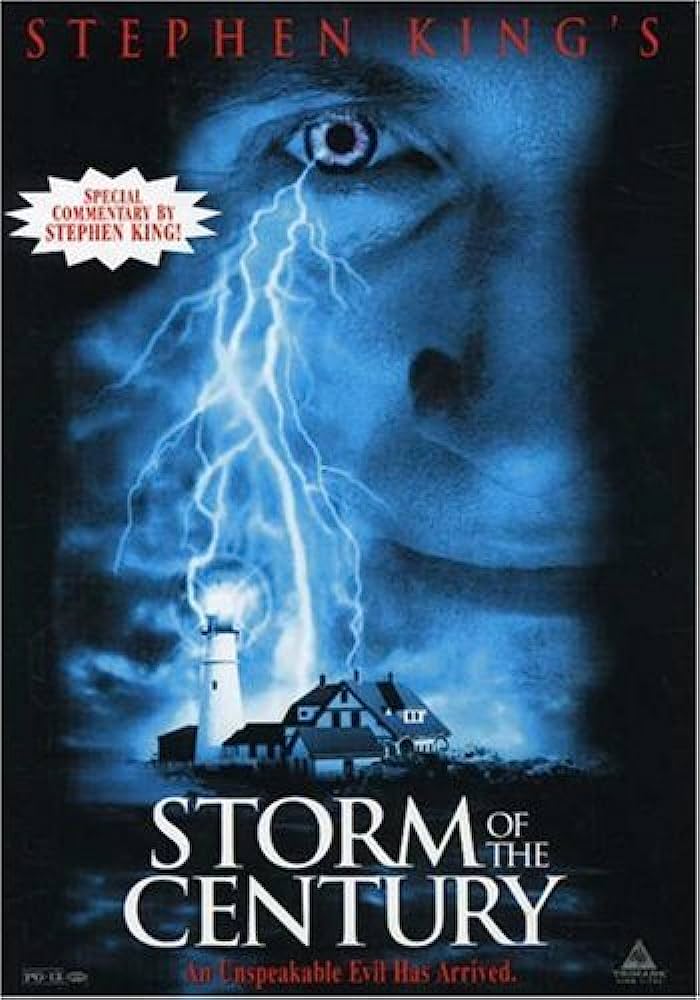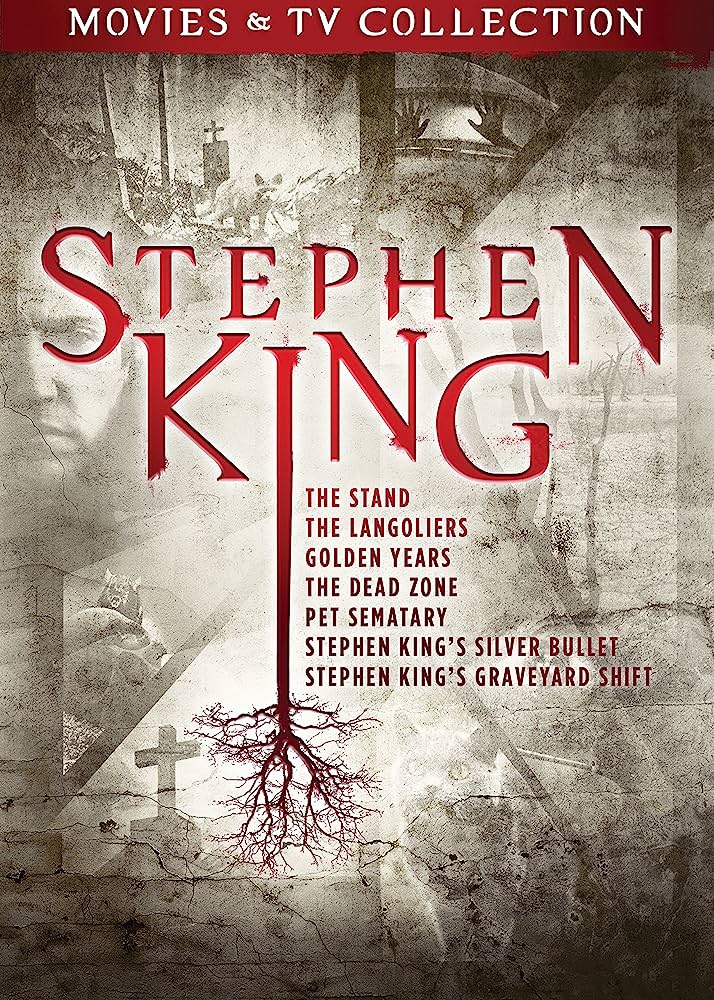What Is The Most Controversial Stephen King Movie Adaptation?
If there’s one thing Stephen King is known for, it’s his ability to craft gripping and terrifying stories that keep readers on the edge of their seats. But what happens when those stories are adapted into movies? Well, let’s just say controversy is not too far behind. In this article, we’ll dive into the world of Stephen King movie adaptations and uncover the most controversial one of them all. So, grab your popcorn and get ready for a wild ride through the dark and twisted corners of King’s imagination.
When it comes to Stephen King adaptations, there’s no shortage of opinions. From die-hard fans to casual moviegoers, everyone seems to have something to say about how the stories translate to the big screen. But which adaptation takes the cake as the most controversial? Is it the bone-chilling “The Shining,” directed by Stanley Kubrick, which divided audiences with its departure from the source material? Or perhaps it’s the hauntingly atmospheric “Pet Sematary,” known for its shocking and unsettling scenes that left viewers both enthralled and disturbed. Join us as we explore the highs and lows, the successes and failures, of Stephen King adaptations, and uncover which one reigns supreme as the most controversial of them all.
Stephen King’s novels have been adapted into numerous movies, but one adaptation stands out as the most controversial. It’s none other than “The Shining” directed by Stanley Kubrick. Released in 1980, the film deviated from the novel in significant ways, prompting mixed reactions from fans and even Stephen King himself. While the movie has gained a cult following and is regarded as a classic, its departure from the source material sparked debates about artistic license and fidelity to the original story.
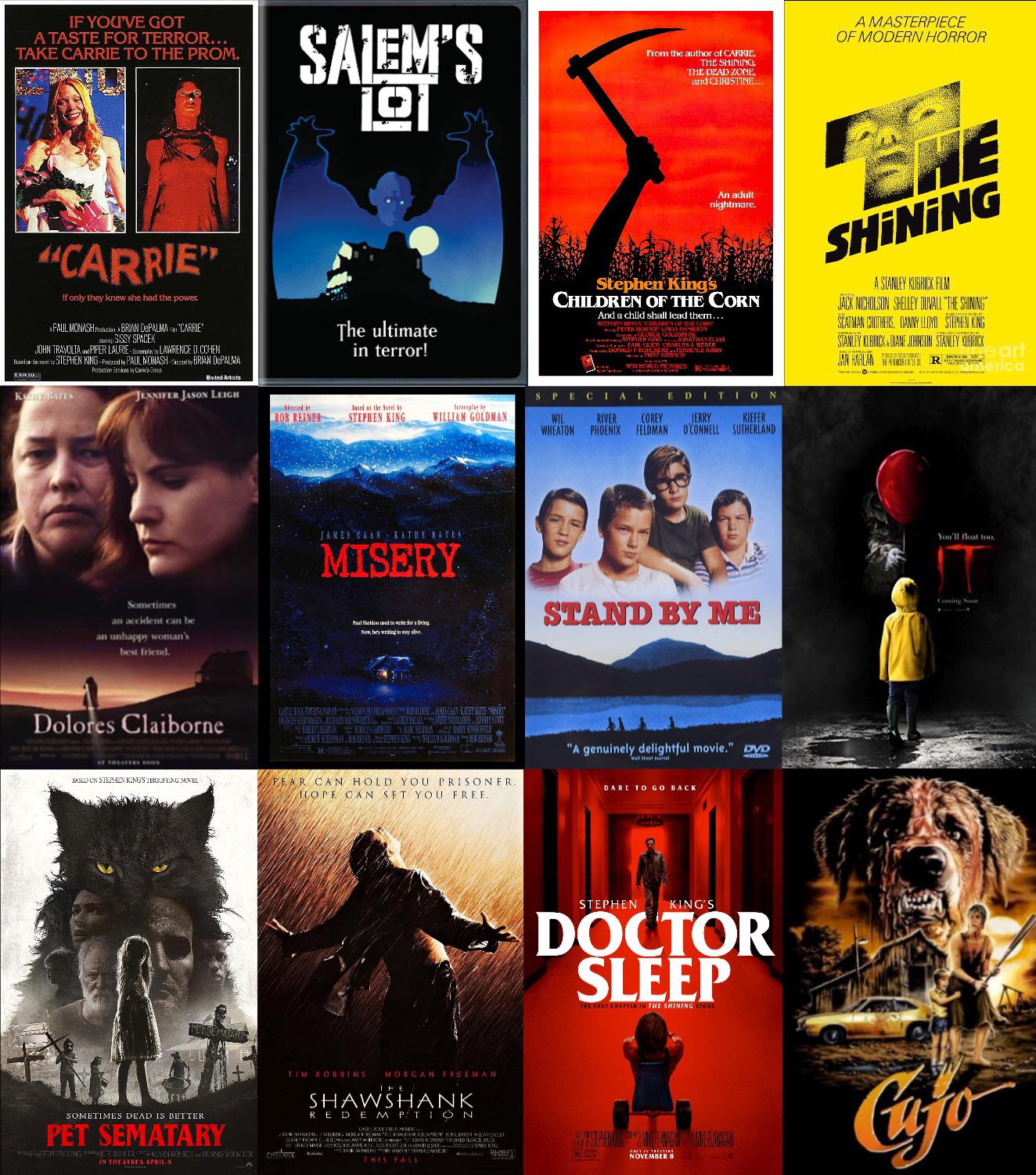
What is the Most Controversial Stephen King Movie Adaptation?
Stephen King, the master of horror, has had many of his novels adapted into movies over the years. While most of these adaptations have been successful, there are a few that have sparked controversy and divided audiences. In this article, we will explore the most controversial Stephen King movie adaptation and the reasons behind the controversy.
The Shining: A Divisive Adaptation
Stanley Kubrick’s 1980 film adaptation of “The Shining” is perhaps the most controversial Stephen King movie adaptation to date. The movie deviates significantly from the source material, resulting in a stark departure from King’s original vision. This departure is what has caused the controversy surrounding the film.
In King’s novel, “The Shining,” the main character, Jack Torrance, is portrayed as a sympathetic character who is gradually driven to madness by the malevolent presence of the Overlook Hotel. However, in Kubrick’s adaptation, Jack Nicholson’s portrayal of Jack Torrance is intense and unhinged right from the beginning, leaving audiences with little sympathy for the character. This drastic change in character development has led to a divide among fans of the novel and the film.
The controversial nature of “The Shining” lies not only in the portrayal of Jack Torrance but also in the interpretation of the supernatural elements of the story. Kubrick’s adaptation places more emphasis on the psychological horror, leaving some fans of the novel disappointed by the omission of key supernatural elements. Despite the controversy, “The Shining” has become a cult classic and is often regarded as one of the greatest horror films of all time.
The Controversy Surrounding Pet Sematary
Another Stephen King adaptation that has generated controversy is the 1989 film “Pet Sematary.” The movie follows the story of a family who discovers a burial ground that has the power to bring the dead back to life. While the novel delves into the themes of grief and loss, the film adaptation received criticism for its portrayal of death and the supernatural.
One of the major points of contention in “Pet Sematary” is the portrayal of the character Zelda, the sister of the protagonist’s wife. In the novel, Zelda is depicted as a physically deformed and mentally ill character who haunts the protagonist’s dreams. However, in the film adaptation, Zelda is portrayed as a grotesque and terrifying figure, which some viewers found to be exploitative and insensitive towards people with disabilities.
Furthermore, the film’s depiction of death and the supernatural elements has also been a source of controversy. Some viewers felt that the movie sensationalized death and portrayed it in a gratuitous and disturbing manner. This controversy highlights the fine line that adaptations of horror novels must walk in order to maintain the integrity of the source material while also appealing to a wider audience.
Ultimately, the most controversial Stephen King movie adaptation is a subjective matter, as different viewers have different opinions and interpretations. However, “The Shining” and “Pet Sematary” are two examples of adaptations that have sparked debate and divided audiences. Despite the controversy, these films have also become iconic in their own right, showcasing the enduring power of Stephen King’s storytelling.
Other Notable Stephen King Movie Adaptations
In addition to the most controversial adaptations, there have been many successful and beloved Stephen King movie adaptations. Here are a few notable examples:
The Shawshank Redemption: A Tale of Hope and Redemption
“The Shawshank Redemption” is often regarded as one of the greatest films ever made, and it is based on Stephen King’s novella, “Rita Hayworth and Shawshank Redemption.” The film tells the story of Andy Dufresne, a banker who is wrongfully convicted of murder and sentenced to life in Shawshank State Penitentiary. It explores themes of hope, friendship, and the resilience of the human spirit.
It: Pennywise the Clown Terrifies Audiences
Stephen King’s epic novel “It” was adapted into a two-part film series in 2017 and 2019. The story revolves around a group of friends known as the Losers’ Club, who must confront their deepest fears when faced with the malevolent entity known as Pennywise the Clown. The films received critical acclaim for their performances, visual effects, and faithful adaptation of King’s sprawling narrative.
Misery: A Terrifying Tale of Obsession
“Misery,” based on Stephen King’s novel of the same name, is a psychological thriller that explores the dark and twisted relationship between a famous author and his obsessed fan. The film adaptation, starring Kathy Bates as the deranged Annie Wilkes, earned Bates an Academy Award for her chilling performance. “Misery” is a gripping and unsettling exploration of the lengths someone will go to in the name of obsession.
Carrie: A Classic Tale of Revenge
“Carrie” is one of Stephen King’s earliest novels and has been adapted multiple times for the big screen. The story follows Carrie White, a high school student with telekinetic powers who seeks revenge on her classmates after they torment her. The 1976 film adaptation by Brian De Palma is often regarded as a classic of the horror genre, featuring a memorable performance by Sissy Spacek in the title role.
These are just a few examples of the many Stephen King movie adaptations that have captivated audiences over the years. Each adaptation brings its own unique interpretation of King’s stories, showcasing the versatility and enduring appeal of his work. Whether controversial or beloved, these adaptations continue to keep audiences on the edge of their seats.
Key Takeaways: What is the most controversial Stephen King movie adaptation?
- The most controversial Stephen King movie adaptation is “The Shining,” directed by Stanley Kubrick.
- Many fans of the book were disappointed with the changes made in the movie.
- Stephen King himself was not a fan of the adaptation and even made his own version in 1997.
- Despite the controversy, “The Shining” has become a cult classic and is widely regarded as one of the greatest horror films of all time.
- The debate over the movie adaptation continues to this day, with fans and critics offering differing opinions on its merits.
Frequently Asked Questions
Here are some frequently asked questions about controversial Stephen King movie adaptations:
1. What is the most polarizing Stephen King movie adaptation?
The most controversial Stephen King movie adaptation is undoubtedly “The Shining” (1980), directed by Stanley Kubrick. While the film has achieved cult status and is widely regarded as a masterpiece, it deviates significantly from the source material and has divided fans of the book. Stephen King himself has been vocal about his dissatisfaction with Kubrick’s interpretation, criticizing the changes made to the characters and themes.
Despite its initial mixed reception, “The Shining” has become a classic in its own right, renowned for its atmospheric cinematography and Jack Nicholson’s iconic performance as Jack Torrance. The film’s departure from the book’s narrative and tonal choices have sparked countless debates among fans and scholars, solidifying its status as the most controversial Stephen King movie adaptation.
2. Why is “Carrie” considered a controversial Stephen King movie adaptation?
“Carrie” (1976), directed by Brian De Palma, is considered controversial due to its graphic depiction of violence and its departure from the novel’s ending. While the book explores themes of isolation and bullying, the film places a greater emphasis on horror and shock value. The infamous prom scene, which showcases Carrie’s telekinetic powers and the subsequent bloodbath, has been both praised for its visceral impact and criticized for its excessive gore.
The controversy surrounding “Carrie” stems from the film’s deviation from the book’s more nuanced exploration of Carrie’s psychological state and the consequences of her powers. Some argue that the movie sacrifices depth for spectacle, while others appreciate the heightened suspense and horror elements. Ultimately, the film’s graphic nature and altered ending have sparked ongoing discussions among fans of Stephen King’s work.
3. What makes “Pet Sematary” a divisive Stephen King movie adaptation?
“Pet Sematary” (1989), directed by Mary Lambert, is a divisive Stephen King movie adaptation primarily due to its disturbing subject matter and its portrayal of child death. The film centers around a family who discovers an ancient burial ground with the power to resurrect the dead, leading to tragic consequences. Many viewers found the movie’s treatment of children and the exploration of grief deeply unsettling.
The controversy surrounding “Pet Sematary” lies in its willingness to tackle taboo subjects and provoke strong emotional reactions. While some appreciate the film’s exploration of the dark side of human nature and its unflinching portrayal of loss, others find it exploitative and gratuitous. The movie’s disturbing imagery and unsettling themes have made it a polarizing entry in the Stephen King filmography.
4. Why is “The Dark Tower” considered a controversial Stephen King movie adaptation?
“The Dark Tower” (2017), directed by Nikolaj Arcel, is considered controversial by fans of Stephen King’s epic book series of the same name. The film attempts to condense the complex and expansive narrative into a single movie, resulting in significant deviations from the source material. Many fans felt that the movie failed to capture the depth and intricacy of the books, leaving them disappointed.
The controversy surrounding “The Dark Tower” centers around the missed potential to adapt a beloved and expansive fantasy series. The film’s condensed storytelling and simplified characterization received criticism for not doing justice to the rich mythology and world-building of the books. While some viewers appreciated the movie as a standalone fantasy action film, its departure from the source material remains a point of contention.
5. Why is “The Mist” considered a controversial Stephen King movie adaptation?
“The Mist” (2007), directed by Frank Darabont, is considered controversial due to its divisive ending. While the film largely stays faithful to the novella’s premise of a small town engulfed in an otherworldly mist, the movie’s conclusion diverges significantly from Stephen King’s original story. The ending of the film shocked audiences and sparked intense debate among viewers.
Without revealing spoilers, the controversial ending of “The Mist” has been praised by some for its bleakness and willingness to take risks. However, others found it unnecessarily dark and felt it contradicted the tone and themes of the novella. The film’s ending has become a point of contention, with viewers either lauding it as a bold departure or criticizing it as a misstep in adapting Stephen King’s work.
Top 20 Best and Worst Stephen King Movie Adaptations
Final Thought: The Most Controversial Stephen King Movie Adaptation
When it comes to Stephen King’s vast library of novels and their adaptations to the big screen, controversy is never far behind. From terrifying clowns to haunted hotels, King’s stories have captivated audiences for decades. But which movie adaptation stands out as the most controversial? After careful consideration, one film rises above the rest: “The Shining.”
“The Shining,” directed by Stanley Kubrick and released in 1980, is a prime example of a Stephen King adaptation that sparked heated debates among fans. While the movie is undeniably a cinematic masterpiece, it deviates significantly from the source material, leading to a divide between those who appreciate Kubrick’s artistic vision and those who feel that the film strayed too far from King’s original intent.
One of the main points of contention revolves around the portrayal of the main character, Jack Torrance, played by Jack Nicholson. In the novel, Torrance is depicted as a sympathetic character who gradually succumbs to the evil influence of the Overlook Hotel. However, Nicholson’s portrayal leans more towards instability right from the start, creating a character that is more menacing than sympathetic. This departure from the book’s depiction of Torrance caused a considerable uproar among die-hard fans.
Additionally, Kubrick’s interpretation of certain key scenes and plot points diverged from King’s vision. For example, the iconic hedge maze in the film was not present in the novel, which left some fans feeling disappointed by the omission. These discrepancies between the book and the movie fueled debates about the faithfulness of the adaptation and whether it did justice to King’s original work.
In conclusion, when discussing the most controversial Stephen King movie adaptation, “The Shining” takes the crown. Its departure from the source material, combined with Stanley Kubrick’s unique artistic choices, sparked passionate discussions among fans. Whether you appreciate the film’s artistic merits or long for a more faithful adaptation, there’s no denying that “The Shining” remains a divisive and thought-provoking entry in the Stephen King movie universe.

